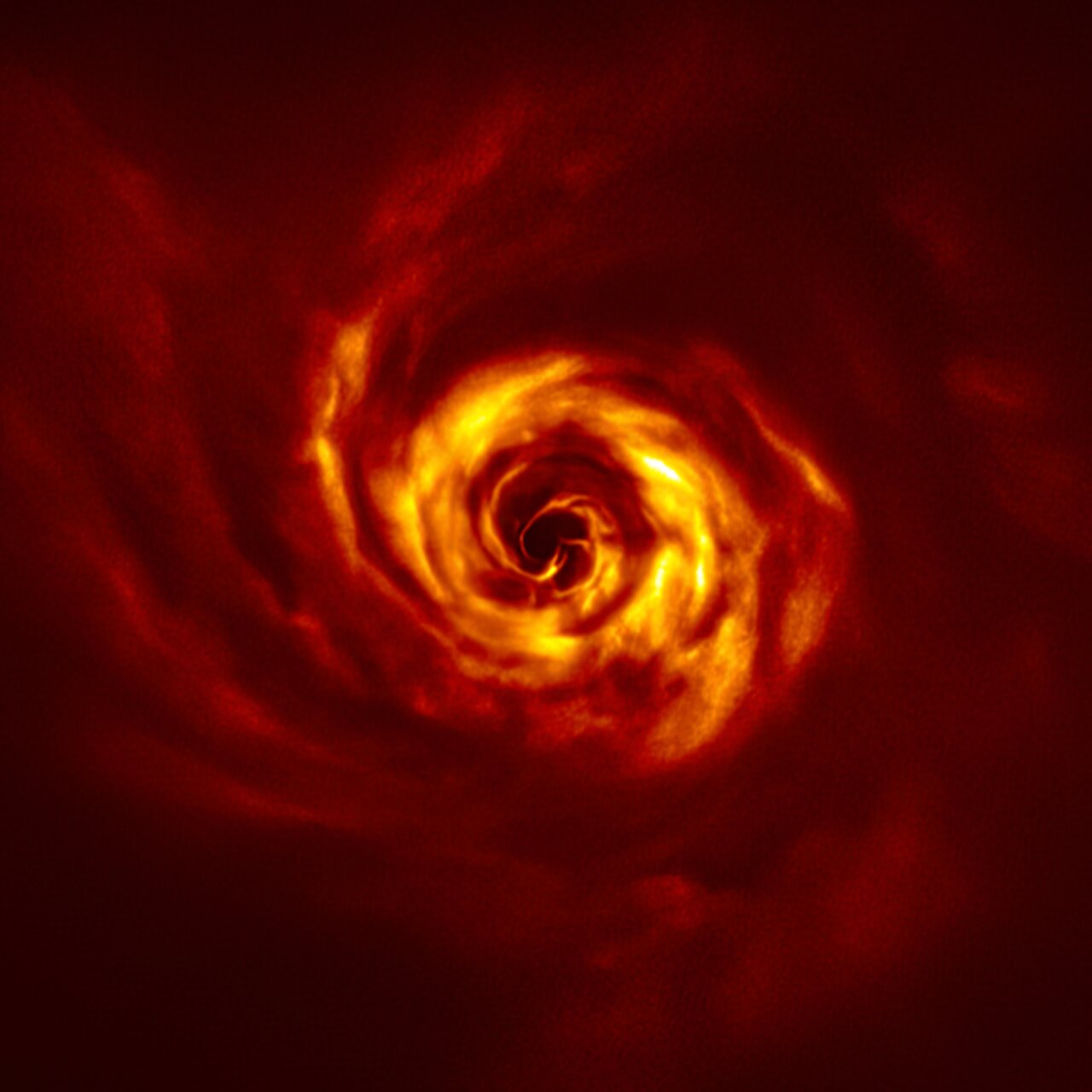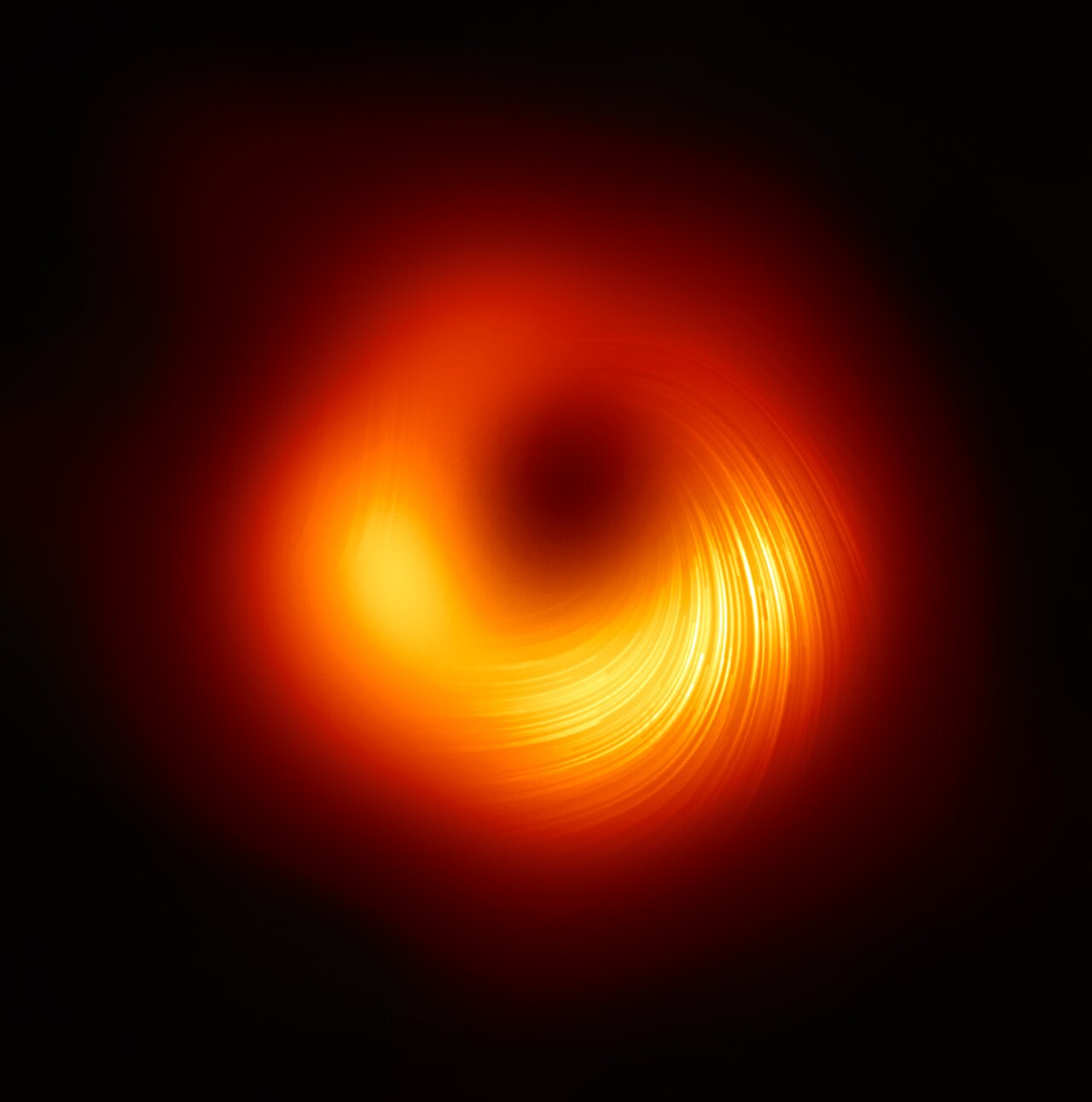Polarimetry
Polarimetry, a technique to measure the polarisation of light, is a powerful tool that allows astronomers to infer information about celestial objects, from passing comets to distant galaxies, that can not be obtained using other techniques.
What is polarisation?
Polarisation is a property of light seen across all wavelengths in the electromagnetic spectrum. It’s something that we’re probably more familiar with than we think. Polarised sunglasses, for example, reduce glare from bright surfaces by filtering light based on its orientation, or polarisation state.
Light from the Sun, and other stars, is said to be unpolarised as it oscillates in all directions. Some sources, such as the screens of mobile phones and televisions, emit polarised light — light that has a preferred direction of oscillation. Looking at these screens through rotated polarised sunglasses will result in the screen appearing dark, because the glasses will block light oscillating along a misaligned direction. Polarisation is not limited to visible light, though; it’s also present at other wavelengths like infrared light or radio waves.
Polarimetric measurements allow astronomers to learn much more about an object than they could from just measuring its brightness.
What can we learn from polarimetry?
Polarimetry has a broad range of applications in astronomy, from studying distant exoplanets to imaging vast supernovae. Polarimetry allows astronomers to observe and measure characteristics of objects that are not always identifiable when using other techniques. Some examples include:
- The size, shape and orientation of dust particles, such as those surrounding comets or in planet-forming discs around stars
- Light from faint sources, such as exoplanets or hidden galactic nuclei
- The scattering properties of light-reflecting bodies (such as planetary atmospheres and the surfaces of rocky bodies)
- The three-dimensional shapes of objects, such as supernovae
- Magnetic fields around stars and other objects, such as black holes
When light hits electrons or particles of dust in space, it is re-emitted in a process called scattering, which can polarise light. Looking at the polarised light scattered from the dust grains surrounding a comet tells astronomers about the properties of this dust, and hence provides the backstory of the comet’s life. It is possible to work out the dust particles diameters, contents and compactness, among other properties.
Astronomers are also able to use polarimetry to determine how often a comet has passed by a star. “Fresh” or “pristine” comets seem to emit light that is more highly polarised than those that have passed by the Sun or another star several times. The FORS2 instrument on ESO’s Very Large Telescope (VLT) studied the dust surrounding the interstellar comet, 2I/Borisov, using polarimetry and discovered it to be one of the most pristine comets ever found.
The SPHERE instrument on ESO’s VLT uses polarimetry to help look for protoplanetary discs — discs of dense gas and dust around newly formed stars that are the birthplace of exoplanets. Starlight is usually unpolarised, however, as it shines through the dust in protoplanetary discs and the atmospheres of planets, it is scattered and becomes polarised. Polarimetry removes the unpolarised starlight from an image, allowing SPHERE to see protoplanetary discs much more clearly. Astronomers expected these discs to be very smooth, almost like pancakes, but polarimetric observations have shown otherwise. A SPHERE study published in 2016 showed that protoplanetary discs have complex morphologies consisting of spiral arms, rings, gaps, and shadows. Another SPHERE paper from 2020 found waves and twists in a protoplanetary disc that could be caused by a young planet being born.
The same instrument has also been used to examine the scattered, polarised light from dust surrounding older stars such as Betelgeuse in the constellation of Orion. This has allowed astronomers to solve mysteries such as why a star is losing mass, and how a planetary nebula is forming.
Polarimetry is also widely used to study powerful stellar explosions called supernovae. Polarimetric observations allow astronomers to work out the shape of the expanding debris around supernovae, even in very distant supernovae where they can’t actually see the ejecta itself. If the ejecta is perfectly spherical, polarisation will cancel out all over the cloud; but if it’s asymmetrical, light will be partially polarised. For example, when observing a special kind of supernovae called Type Ia, commonly used to measure the distance to far-away galaxies, the FORS1 instrument on ESO’s VLT discovered for the first time that a Type Ia supernovae can be asymmetrical.
Polarimetry also allows us to “see” an object’s magnetic field. In the presence of magnetic fields, high-speed electrons move in a spiral path and, in doing so, they emit so-called “synchrotron radiation”, which is polarised. The Atacama Large Millimeter/submillimeter Array (ALMA), in which ESO is a partner, was used as part of the Event Horizon Telescope collaboration to image the supermassive black hole at the heart of the M87 galaxy in polarised light. This has allowed astronomers to map the magnetic fields around this black hole and learn more about its morphology and physics.
Magnetic fields can also be measured by combining polarimetry with spectroscopy in the optical, a technique called spectro-polarimetry, and used on the HARPS instrument on the ESO 3.6m telescope in La Silla.
How do we measure polarised light?
To measure polarisation, a telescope must be equipped with a “polariser” — a filter that only allows light with a particular direction of polarisation to pass through. Instruments like SPHERE typically measure polarisation by using one vertical polariser and one horizontal polariser. A beam of light is split into two channels — one with the vertical polariser and one with the horizontal polariser — and both resulting images are recorded. When one image is subtracted from the other, all the light that is unpolarised is cancelled out, leaving behind an image that consists only of polarised light. This is extremely useful for exoplanet and disc hunting because the resulting image removes the glare of the starlight, and leaves behind the scattered light from the disc.
Building instruments with polarimetric capabilities poses several challenges. First, because polarimeters effectively block some of the light travelling towards Earth, it’s most effectively used to study very bright objects — unless a large telescope, like ESO’s VLT, is used.
Secondly, telescopes and their instruments intrinsically generate a certain amount of polarisation themselves when light bounces off their mirrors or goes through various optical elements. Engineers need to make careful design choices to minimise this, and take calibration data to estimate the amount of intrinsic polarisation coming from the telescope and instrument and not from the astronomical target itself.
Current ESO instruments with polarimetric modes
|
Instrument |
Telescope |
| FORS2 | VLT (UT1, Antu), Paranal |
| SPHERE | VLT (UT3, Melipal), Paranal |
| CRIRES+ | VLT (UT3, Melipal), Paranal |
| HARPS | 3.6m telescope, La Silla |
| SOFI | New Technology Telescope, La Silla |
| EFOSC2 | New Technology Telescope, La Silla |
| Various receivers | ALMA |

